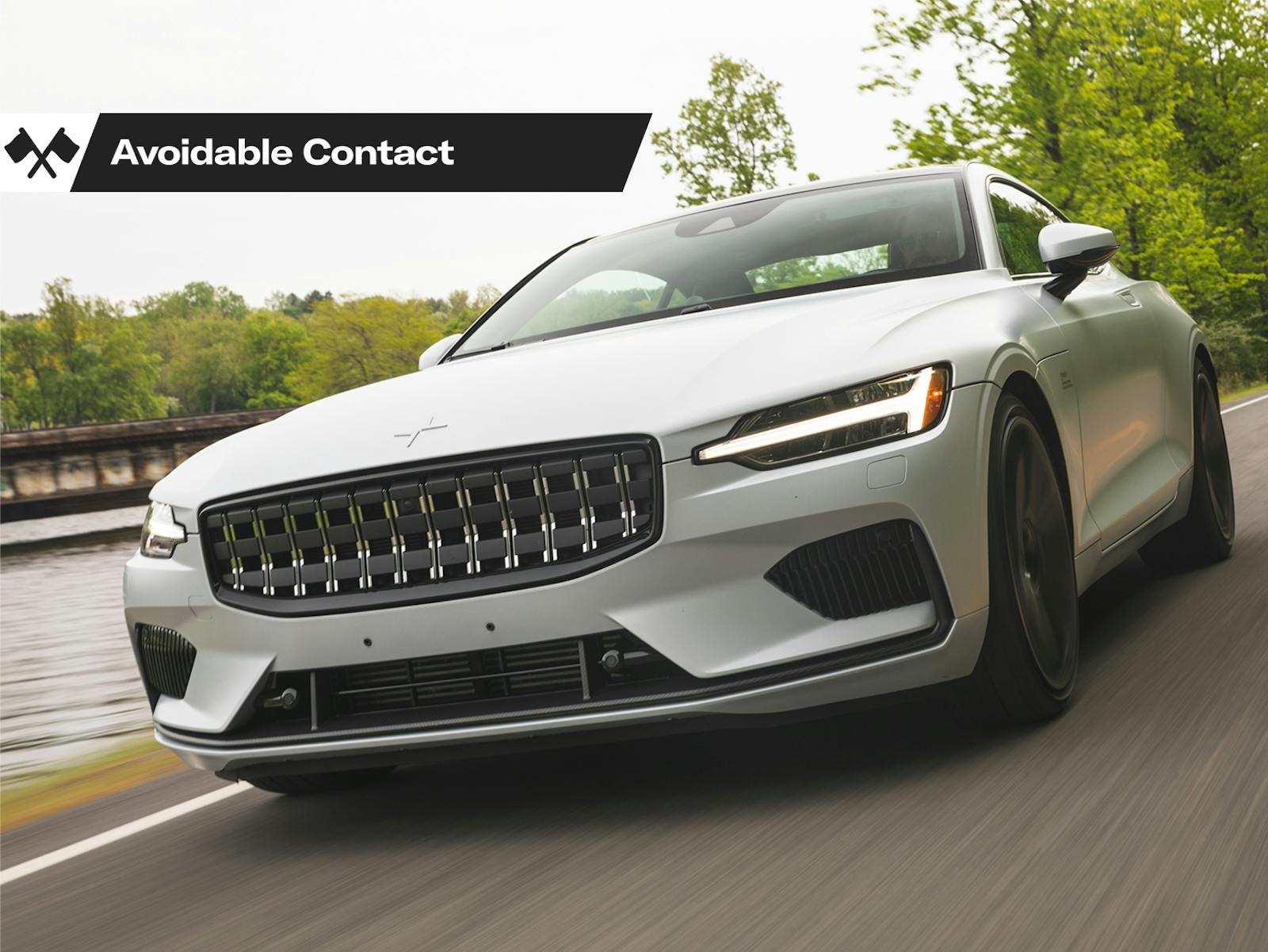Avoidable Contact #130: Earnestly ersatz

If you’ve been reading me for a while:
a) Thanks, Mom!
b) You’ve possibly noticed that I really enjoy spending a lot of money on clothes. This isn’t because I think they make me look handsome; nothing could accomplish that task. It’s because I truly enjoy wearing something that was made for me out of the finest materials available. I like meeting the people who make my clothes, and hearing their stories. It feels human in a way that a “dude’s clothing subscription box” or a “curated ensemble from Brand X” is precisely not.
Most days of the week, you’ll find me wearing an entirely American-made clothing ensemble, from undergarments to shoes. This is not easily accomplished in the year 2021. I’ve spent a lot of time asking company representatives where exactly their clothes are made. And of what. And by whom. And then periodically asking the same companies the same questions, because clothing manufacturers have a very sneaky way of sneaking their sneaky little manufacturing enterprises offshore without telling anyone.
After 23 years of learning and knowing exactly how and where the items in my wardrobe were made, I’ve learned quite a few things about what the kids (and brands) call authenticity. Let me summarize the important ones for you below:
0. The more a clothing manufacturer goes on about “sustainability” and “environment impact” and “carbon neutral,” the more likely it is that their entire line is sewn by children someplace Bob Denard would be afraid to visit.
1. Unless a manufacturer explicitly states “Made In USA” on all the marketing materials, plus the items themselves, their stuff is almost certainly made overseas. There is one exception to this, and it’s not clothing: as far as I can tell, everything sold by Moog (the synthesizer people, not the ball joint makers) is entirely made by hand in the United States, yet the firm never mentions it. I suspect it’s for reasons of stubborn pride, something along the lines of “How could it be any other way?”
2. When a company has the name of a Western city in their brand name, I guarantee you everything they sell is made in China. So-so-so “New York”? Made in China. Such-and-such “of London”? China. There is clothing made in New York, and there is clothing made in London, but the firms that sew and stitch there don’t claim their cities on a billboard or a brand label.
3. If there is a flag on a garment, there is no way the item in question was made in that country. There are a few exceptions, most of them American firms aimed at the rural crowd, but in general the presence of a Swiss or UK or Italian flag means: made in China or Vietnam, and stitched up with another country’s flag.
Those of you who are genuinely interested in American-made stuff can contact me, and I’ll tell you where to find what you want. To a limited extent, I can do the same for English or Italian tailoring, although in the case of Italy you really need to go to the Borelli or Kiton level to get something that isn’t sewn in China then “finished” in Italy by Chinese citizens working there on a temporary basis.
Some readers will be positively steaming with agitation right now. How dare I attempt to buy American or European products? Don’t I know that globalization benefits everyone? Haven’t I read the various best-selling books aimed at the chattering class, all designed to convince them that the bloody hollowing-out of American manufacturing is a good thing and that it’s positively moral to wear all that “Patagucci” stuff that has vibrant political messages on the front of a tag that reads “Made in Bangladesh” on the subdued back? Who do I think I am, wanting my neighbors here in rural Ohio to have jobs? Why can’t they all just learn to code?
(Sidebar: I learned to code in 1982. I paid for three Porsches and multiple race cars with coding. I don’t much care for it, in the long run. If you don’t have the equivalent of the “noodle dream” from “Kung Fu Panda,” which would probably involve walking hand-in-hand through the MIT campus on a sunny day with Richard Stallman while Bill Joy waves at you from his Ferrari Mondial, then coding is not for you.)
The only excuse I can offer for my pro-American attitude is that I’m a bit of a hick. Sorry about that. I’m too stupid to understand the benefits of closing down factories and putting people out of work. Someday I’ll watch a TED talk or something and figure it out. In the meantime, however, I’ve noticed something similar to the above clothing-related lessons in the automotive world, and it goes something like this:
The less an automotive brand actually has to do with its supposed “home country,” the more said brand will chatter and babble about said home country.
Example: I owned a 1986 Jaguar Vanden Plas back in the day. (That’s a Daimler Six for you U.K. readers.) My “VDP” was entirely made in the U.K., with British components stem to stern, by British people. At the time Jaguar was a privately held British company, having escaped the proverbial bring-out-the-gimp room of British Leyland by the magic and grace of Sir John Egan. As far as I can tell, the only non-British thing about my Jag was the factory-installed wire wheels, made by Dayton Wire Wheel in Ohio.
Any guesses as to how many “Union Jack” flags there were on that car? If you guessed zero, you were right. The same was true of Aston Martins, Land Rovers, and other British cars of the era.
Fast forward to 2021. That MINI you see with the Union Jack flags in the taillights? Why, it’s a product of the BMW Group, which assembles MINIs in Europe as well as Britain. The Aston Martin with all the James Bond and Union Flag marketing? Likely it was made during the time that Aston Martin was owned by a Kuwaiti sovereign wealth fund. Jaguar and Land Rover, the two most British brands you can imagine, slathered with Royal Marques and whatnot? Owned by an Indian car firm and largely engineered by that firm.
What about Volvo, the seats of which occasionally come with the charming little Swedish flag seen in the photo at the top of this article? Why, it’s been a wholly-owned subsidiary of China’s Geely Automotive since 2010. In October, Volvo launched a successful IPO—but while you can now own part of the “Swedish” firm, the majority of it will still be owned and controlled by Geely. A lot of shell games are being played with the new public-ish company, including one in which “Volvo” buys its manufacturing plants from “Geely,” but it would take an exceptionally sophisticated, or perhaps exceptionally naive, person to think that Volvo will ever be “Swedish” the way they were in 1975.
As automakers continue to abandon their individual and national character, increasingly becoming undifferentiated corporate entities with musical-chairs executives, lowest-cost-location manufacturing, and truly global sourcing for engineering and design, you can expect to see even more waving of flags and breathless marketing-materials recitation of national stereotypes. When Stellantis markets its Ontario-built, Mexican-engined Hellcats, it’s George Washington in the ads, not Pierre Trudeau or “AMLO”. (To be fair, the cars do come off as far more “American” than, say, the Chinese-made Volvo V90 strikes one as “Swedish.”)
Naturally, there are exceptions. If you read Honda’s annual report, you’ll see that the nine-tenths iceberg bulk of the firm is Chinese scooters and American cars—but Honda doesn’t obscure this at all, going so far as to celebrate it with the Ohio-designed and Ohio-build Acura NSX. The Mahindra Roxor off-road vehicle, an example of which just joined my personal fleet here in the Buckeye State, is proudly assembled in Michigan of 50 percent domestic parts, something the company mentions every chance it gets. Still, the general drift of the industry is absolutely in the direction of what pro wrestling used to call “kayfabe,” or fake.
This unpleasant trend, already traveling at the speed of a bullet train, will accelerate to hyperspace when the “electric future” arrives in earnest. Insofar as most of the world’s boots-on-the-ground tech expertise is in China now, to say nothing of all the requisite raw materials, the automakers won’t waste the opportunity to subcontract the bulk of their EV production over there. By 2035 or so, the car business could be very much like the clothing business is nowadays: the vast majority of it is produced by anonymous Chinese factories which then slap a European or American brand on the thing as it leaves the line, possibly accompanied by a chic little national flag representing where said brand has its marketing office.
At that point, I suspect that many of us will wind up doing with cars what I currently do with clothes. We will find ourselves sifting through massive sodden lumps of marketing materials and obfuscations to figure just where the darn thing is made. Is that new i-Whatever actually made in Spartanburg, or is it merely the assembly of a completely-knocked-down kit from Shenzen? Could it really be true that a certain Italian supercar and another well-known English SUV use the same motors, wound in the same Chinese factory?
Some of you won’t care, of course. You’ll cheerfully buy sweatshop-made automobiles with fancy labels, just like you’re doing with your polyester athleisure now, secure in the arrogant belief that you and your job are too special, too difficult, too unique to ever be sent out of the country the way 99 percent of denim production has been over the past 30 years. Perhaps you’re right. Alternately, perhaps you’re the modern equivalent of Marie Antoinette. Only time will tell.
There’s an ironic postscript to all of this, of course. Your humble author was recently involved in a discussion about the Nintendo Switch video game system, of all things. Apparently Switches for the home Japanese market are made in China, but U.S.-bound Switches are now made in Vietnam. Some members of the Switch community are very angry about this. “I was expecting a Chinese Switch!” one of them complained. How long will it be until Nintendo decides to pacify him by placing a little Chinese flag on a Vietnamese Switch? Imagine the day when you think you’re entering into a mobility-pod subscription service from “Baofeng of Shanghai” only to find out that the vehicle you’re renting was made in a disadvantaged country like Thailand, or Malaysia, or … the United States?

